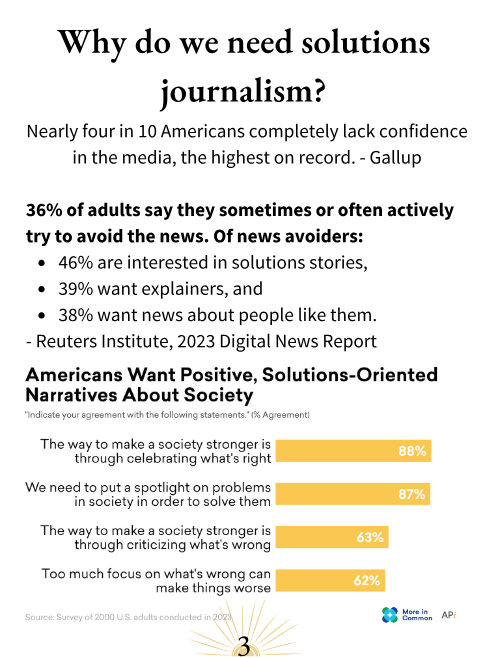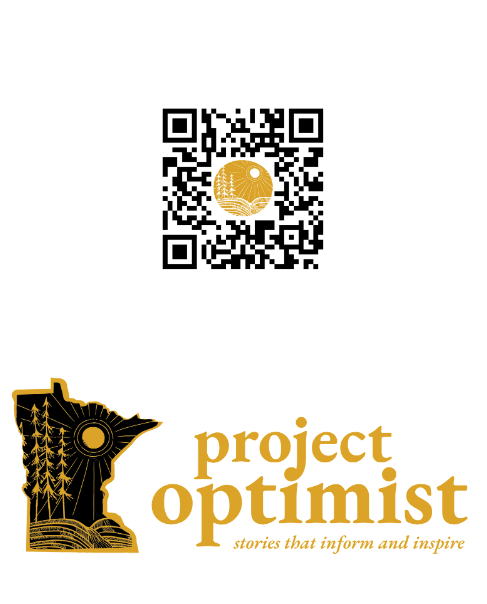What is solutions journalism?

Solutions journalism is exactly what its name suggests: Journalism that explores solutions to problems.
The Solutions Journalism Network defines it as “rigorous and compelling reporting about social problems.”
What it isn’t
Solutions journalism doesn’t advocate for or against any particular response.
Solutions are not reported as silver bullets.
It’s not hero worship, or a heartwarming feature story, or a story about a friend.
The response to the problem isn’t an afterthought at the end of the story.
It doesn’t focus on responses or solutions that don’t exist.
What is it?
Solutions journalism reports on a response to a problem rigorously. Stories that are considered solutions journalism look at the benefits and limitations of a particular response. They explore what critics say about a solution. They look to see if there is research about a response and if so, what the research shows.
What are the four pillars?
Solutions journalism is founded on four pillars. To be a solutions story, as defined by the Solutions Journalism Network, a story must include:
- A RESPONSE to a problem,
- EVIDENCE about how effective the response is,
- INSIGHTS about implementing the response, and
- LIMITATIONS of the response.
Would you like to learn how to practice solutions journalism?
We'll train you! Contact nora@projectoptimist.news.
Would you like to pitch us a solutions journalism story?
Read our Pitch us page!
Check out our solutions journalism 'zine!
You can download a free pdf of our 'zine here. It is meant to be printed on 11x17 paper.
Images of the pages also appear below:








